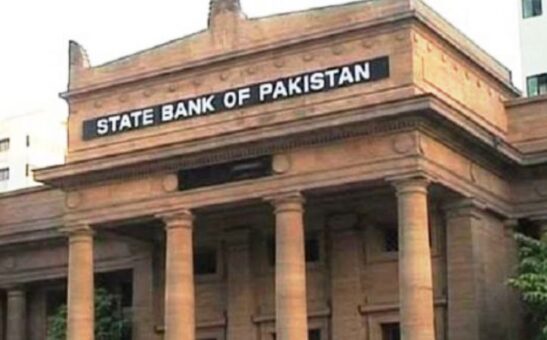KARACHI: State Bank of Pakistan (SBP) has issued common red flag indicators for banks to take care in avoiding trade based money laundering and terrorist financing.
Following are the common Red Flag indicators:
i. Obvious over or under/over pricing of goods (significant discrepancies appear between the value of the goods reported on the invoice/EIF/MIF, EFE/MFE, Advance Payment Voucher and the known fair market value of the goods).
ii. The description of goods on the Goods Declaration Form/Transport documents significantly varies from the description declared on EIF/MIF, EFE/MEF or underlying contract.
iii. Significant variation is found between the description of the goods on the bill of lading and the invoice.
iv. There are indications that the description of the goods is disguised.
v. The tenor of the transaction does not commensurate with the nature of the underlying goods – for example perishable goods are traded on terms involving lengthy usance period.
vi. Documents such as a letter of credit is received through unverified channels such as unauthenticated SWIFT message.
vii. The type of goods being shipped appears to be inconsistent with the exporter’s or importer’s regular business activities.
viii. The size of the shipment does not commensurate with the size of the exporter’s or importer’s regular business activities.
ix. The packaging of goods is inconsistent with the commodity or shipping method.
x. The goods are transshipped through one or more countries/jurisdictions for no apparent economic or logistical reason.
xi. The country from which goods are being shipped is designated as “high risk” for money laundering activities.
xii. The transaction involves the receipt of payments from third parties that have no apparent connection with the transaction.
xiii. The method of payment apparently does not commensurate with the risk characteristics of the transaction e.g. the remittance of funds in advance payment for a shipment from a new supplier in a high-risk country.
xiv. The transactions involving consecutive trade discount offered by exporters to the same importer.
xv. The transaction involves repeatedly amended or frequently extended letters of credit.
xvi. An exporter receives advance payment(s) but does not make shipment(s) there against.
xvii. An Importer remits advance payment(s) but does not receive shipment(s) there against.
xviii. The transaction appears to involve use of front or shell companies for the purpose of hiding the true parties involved.
xix. The transaction involves import/export of dual use goods.
xx. The item ordered is incompatible with the technical level of the country to which it is being shipped, such as semiconductor manufacturing equipment being shipped to a country that has no electronics industry.
xxi. Where important details are missing on commercial invoice(s) or mentioned vaguely.
xxii. Where some of the shipping documents are provided in photocopies instead of original against the regularity instructions or against normal business scenarios.
xxiii. Where goods declarations in commercial invoice(s) are not proper, incomplete or otherwise not mentioned at all to conceal the facts.
xxiv. Receipt of proceeds from non-cooperative countries as per FATF list against the shipment made to a third country.
xxv. Where export proceeds are received from unrelated/third party with differing nature of business from that of exporter.
